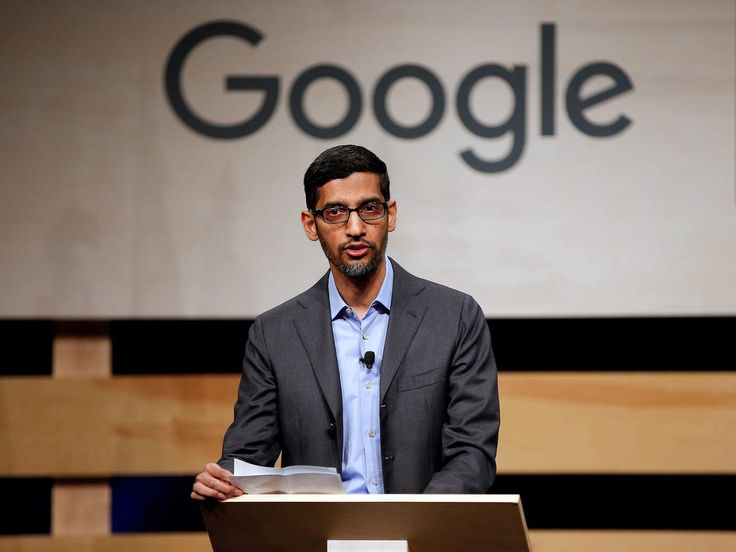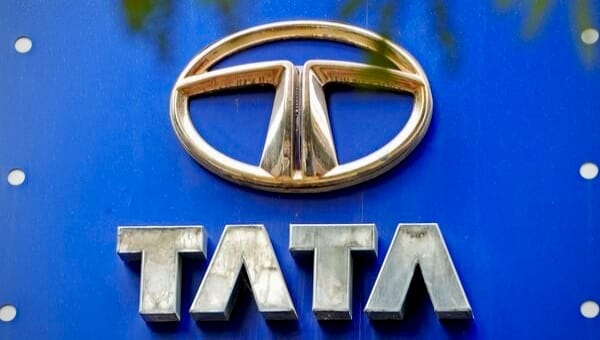
The global artificial intelligence landscape witnessed a seismic shift this week as Google unveiled Veo 3.1, its highly anticipated text-to-video generation model. This groundbreaking release immediately positions Alphabet’s AI division in direct, high-stakes competition with OpenAI’s yet-to-be-publicly-released Sora 2, setting the stage for an intense rivalry that promises to redefine content creation, digital media, and the very fabric of human storytelling. The launch underscores a pivotal moment where technological giants are racing to master generative video, pushing the boundaries of realism and accessibility, with profound implications for investors, policymakers, and creative professionals from Hollywood to Bollywood, as they grapple with an accelerating future powered by intelligent machines.
The advent of sophisticated AI video generation marks the latest frontier in a rapidly evolving technological revolution. For years, the ability to conjure high-fidelity, coherent, and extended video sequences from simple text prompts remained a distant dream, a technical holy grail that eluded even the most advanced AI labs. The complexity involved—maintaining temporal consistency, understanding narrative flow, rendering nuanced motion, and adhering to physical laws—is exponentially greater than generating static images or text.
The Generative AI Ascent: A Brief History
Generative AI, in its current iteration, first captivated the public imagination with large language models (LLMs) like GPT-3 and later, image generators such as DALL-E 2 and Midjourney. These tools democratized visual artistry, allowing millions to create stunning images with unprecedented ease. However, the move to video generation represents a quantum leap, demanding significantly more computational power and algorithmic sophistication. Early attempts like RunwayML and Pika Labs offered glimpses of this potential, producing short, often whimsical clips. But it was OpenAI’s stunning demonstrations of Sora 2, back in February, that truly signaled the arrival of cinematic-quality AI video, capable of generating minute-long, complex scenes with remarkable detail and camera control.
Sora 2’s reveal sent ripples through creative industries, eliciting both awe and anxiety. Filmmakers, advertisers, and VFX artists wondered aloud about the future of their crafts. The immediate impact of Sora’s capabilities, even in demo form, was to establish a new benchmark for AI video. Its ability to create “multi-shot” scenes, simulate intricate physics, and render diverse characters with emotional depth suggested a technology on the cusp of mainstream adoption, promising to slash production costs and accelerate content pipelines.
Veo 3.1: Google’s Formidable Response
Google’s Veo 3.1, while not yet fully available to the public, has been demonstrated through select partnerships with creators and internally. Early reports and preview footage suggest it is a formidable challenger, showcasing capabilities that directly rival Sora 2. Veo boasts the ability to generate high-definition 1080p videos of significant length—reports indicate clips exceeding 60 seconds are achievable—while maintaining strong semantic understanding of prompts, consistent character depiction, and realistic motion.
Crucially, Google emphasizes Veo’s nuanced control over stylistic elements and cinematic parameters, allowing creators to dictate camera angles, lighting, and mood with greater precision. This level of creative agency is paramount for professionals who demand more than just random generation. The underlying technology likely combines advancements in diffusion models, transformer architectures, and sophisticated latent space optimization, drawing upon Google’s vast research in machine learning and its access to immense datasets. The sheer scale of Google’s computational infrastructure and its decade-long investment in AI research, from DeepMind to Google Brain, provides a robust foundation for Veo’s capabilities.
The Battle for AI Video Supremacy
The direct competition between Google’s Veo 3.1 and OpenAI’s Sora 2 is more than just a technological arms race; it’s a strategic battle for market dominance in a nascent, multi-trillion-dollar industry. Both companies are vying to become the foundational layer for future media creation. OpenAI, backed by Microsoft, has leveraged its agility and “first-mover” advantage in generating public excitement. Google, with its vast ecosystem spanning YouTube, Google Cloud, and an unparalleled global reach, brings a different kind of leverage to the table.
“This isn’t just about who can make the prettiest video,” says Dr. Anjali Sharma, a Mumbai-based AI ethicist and former senior researcher at Infosys. “It’s about data sovereignty, intellectual property, and establishing the dominant platform. The company that can offer the most robust, versatile, and ethically governed tool will likely capture the lion’s share of future creative markets, from entertainment to education.”
The rivalry extends beyond feature parity. It encompasses the speed of iteration, the scalability of deployment, the pricing models for API access, and critically, the ability to build trust with users regarding ethical AI practices, data privacy, and mitigating risks like deepfakes and misinformation.
Implications for Investors: Winners and Losers
The unveiling of Veo 3.1 has immediate and significant implications for investors across the technology and media sectors.
Alphabet (GOOGL): Google’s aggressive push into generative video is a strong positive for Alphabet shareholders. It validates the company’s massive investments in AI and signals its determination not to cede leadership in this critical domain. Success with Veo could unlock new revenue streams through API access for developers, integration into existing Google services (like YouTube or Google Workspace), and potentially a premium content creation suite. Analysts at Goldman Sachs project that generative AI could add trillions to global GDP over the next decade, and Google’s competitive stance ensures it remains a central player.
OpenAI/Microsoft (MSFT): While Sora’s initial impact was immense, Veo’s arrival puts pressure on OpenAI to commercialize Sora rapidly and effectively. Microsoft, OpenAI’s primary investor, benefits from OpenAI’s innovations, but a strong competitor like Google means the generative AI market will be fiercely contested, potentially impacting OpenAI’s valuation and Microsoft’s competitive edge in cloud AI services.
Nvidia (NVDA): The demand for advanced graphics processing units (GPUs)—the computational backbone of generative AI—will only intensify. Both Google and OpenAI are massive consumers of Nvidia’s A100 and H100 chips. “Every new generative model, every leap in AI capability, translates directly into increased demand for high-performance computing hardware,” notes a recent report from IDC, projecting continued robust growth for the data center and AI chip markets.
Creative Startups: This competition creates both opportunities and existential threats for smaller AI video generation startups like RunwayML, Pika Labs, and Stability AI. They may struggle to compete with the vast resources, data, and distribution channels of tech giants. However, they could also become attractive acquisition targets for companies looking to bolster their AI talent and intellectual property.
Traditional Media & Entertainment: Major studios, advertising agencies, and content producers face a choice: embrace AI tools to enhance efficiency and creative output, or risk being outmaneuvered by agile, AI-powered competitors. The cost savings in animation, VFX, and advertising production could be astronomical, but also potentially disruptive to existing job roles.
Global and Indian Economic Relevance
The impact of such powerful AI tools will reverberate globally, and India, with its burgeoning digital economy and vibrant creative industries, is uniquely positioned to both capitalize on and grapple with these changes.
India’s Creative Economy: Bollywood, Tollywood, and regional film industries, along with India’s massive advertising and animation sectors, stand to be profoundly affected. Generative AI can democratize filmmaking, allowing independent creators and small studios to produce high-quality content without massive budgets. This could unleash a wave of new storytelling, particularly in regional languages, reaching diverse audiences.
Skill Transformation: India’s vast talent pool in IT and creative arts will need to reskill. The focus will shift from purely executing tasks to prompting, refining, and curating AI-generated content. Educational institutions and government skilling programs will need to adapt rapidly to equip the workforce with “AI-fluency.”
Startup Ecosystem: Indian AI startups could find niches in developing specialized applications using foundational models like Veo or Sora, perhaps focusing on local language content, cultural nuances, or specific industry verticals. The “Digital India” initiative and the government’s push for AI adoption could foster an environment for innovation.
Ethical Concerns: India, like the rest of the world, faces the challenge of deepfakes and misinformation. With tools capable of generating realistic video, the need for robust AI governance, content provenance tracking, and media literacy becomes paramount. Policymakers will need to consider regulations balancing innovation with societal protection.
Policy and Ethical Quandaries
Beyond the economic implications, the rise of hyper-realistic AI video generation raises profound ethical and policy questions.
Deepfakes and Misinformation: The ease with which convincing, yet fabricated, videos can be created poses a significant threat to public discourse, elections, and individual privacy. Governments globally, including India’s, are grappling with how to regulate this technology without stifling innovation. Calls for watermarking AI-generated content and robust detection tools are growing louder.
Copyright and Intellectual Property: The datasets used to train these models often scrape vast amounts of copyrighted material. This raises complex legal questions about ownership, attribution, and fair use, issues that are currently being litigated in courts worldwide.
Job Displacement vs. Creation: While AI will undoubtedly automate certain creative tasks, it also opens avenues for new roles, such as “prompt engineers,” AI ethicists, and specialists in AI-assisted content production. Policymakers must focus on transitional support and reskilling initiatives to mitigate job losses and harness new opportunities.
A Future Forged by Pixels and Algorithms
The race between Google’s Veo 3.1 and OpenAI’s Sora 2 signifies a new era in artificial intelligence. It’s not merely a competition between two tech behemoths, but a profound inflection point for how humans will create, consume, and interact with digital media. The rapid advancements promise unprecedented creative freedom and efficiency, yet they also bring complex ethical dilemmas and societal challenges that demand thoughtful consideration and proactive governance.
MoneyFint believes that understanding these shifts requires not just reporting the facts, but dissecting their deeper implications with intelligence and foresight. As Google and OpenAI push the boundaries of what machines can visualize, the world watches, poised at the precipice of a future where imagination is no longer limited by the constraints of physical production, but by the ingenuity of prompts and the power of algorithms. This revolution is just beginning, and its trajectory will shape industries, economies, and cultures for decades to come, demanding continuous, intelligent analysis to navigate its vast potential and inherent risks.








